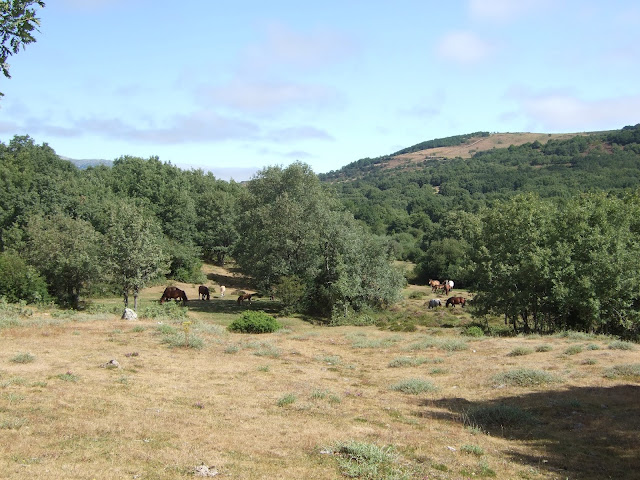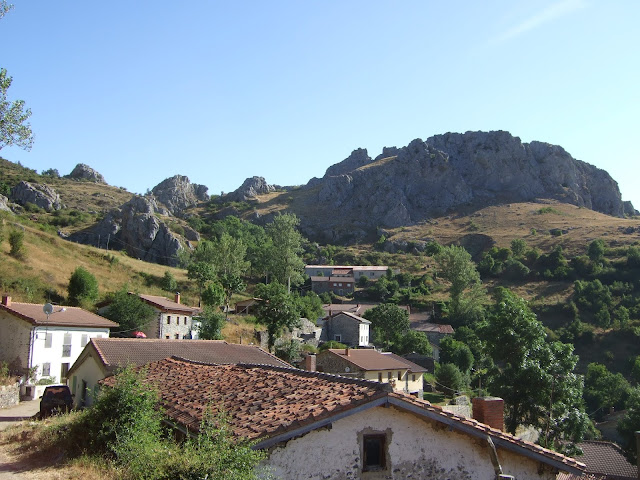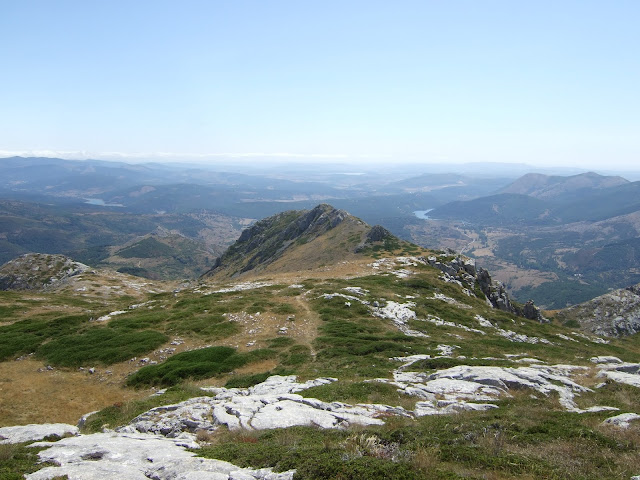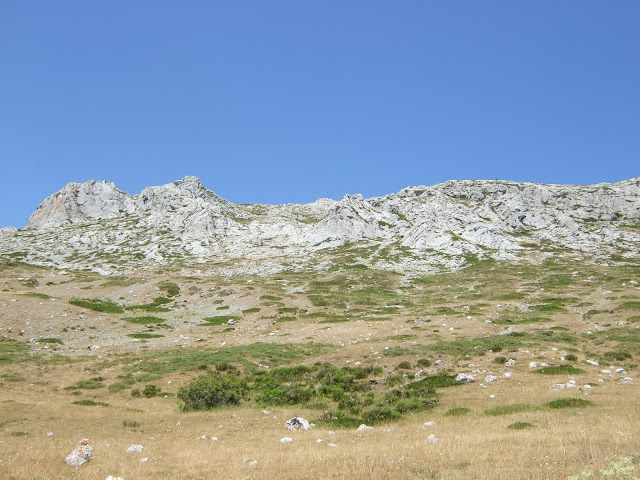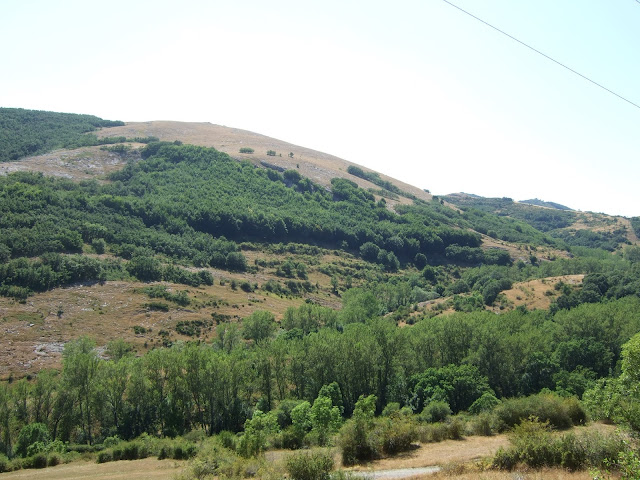 |
| Sierra de Híjar |
 |
| Puente de Rojadillo |
En la otra orilla arranca una pista que sube en dirección NO, pero la dejé para ir monte a través hacia el collado de Somahoz. Este paso tan distintivo era usado por los trashumantes con destino a Campoo de Suso, y en tiempos más recientes por los ganaderos de los pueblos de Brañosera y Salcedillo cuando iban a la feria de San Mateo en Reinosa. Avancé por el brezo, alcanzando la carretera un poco antes de que deja Palencia.
Una versión nueva de una canción tradicional recopilada en Brañosera
On the other side a dusty track goes up to the NW, but I rejected it and headed straight up through the heather to the Somahoz pass, which was used not only by sheep drovers for centuries to cross over to the northern side but also more recently by farmers taking their cattle from the villages in northernmost Castile to the fairs in Reinosa. I reached the road just a couple of hundred yards before it leaves Palencia.
Sigo unos metros más para poder apreciar las vistas a los montes de la Hermandad de Campoo de Suso. En la Edad Media los que venían del centro de lo que hoy llamamos Cantabria para repoblar Castilla usaban este camino, que se dio en llamar la Ruta de los Foramontanos. I carry on a few minutes until I get a view of the mountains on the other side. This col was also used by the people who came from the north to settle in Castile in the Middle Ages following the retreat of the Moors. The route was named the "Foramontanos' way".
Llego otra vez al puente de Rojadillo, y lo admiro desde el otro lado Back at the Roman bridge, I take a look at it from the other side
 |
| Chozo Tonino |
La desviación que buscaba está a pocos metros, así que dejo la pista y subo hacia la izquierda. Pronto veo este roble que destaca bastante entre sus vecinos The path I was looking for is only a few metres away, so I leave the trail, which carries on to Brañosera, and head up to the left. I soon see an oak tree that stands out amongst its neighbours
Cuando la senda sale del bosque decido cruzar un lugar llamado El Escobal para ver las vistas hacia el oeste. Delante de mi hay un parque eólico, que dejo a mi izquierda, y llego a un lugar perfecto para sentir la brisa que ha puesto en funcionamiento las turbinas. Debajo está Brañosera y la subida a Golobar y Valdecebollas detrás del pueblo. Dejo pasar el ganado antes de sentarme a disfrutar de mi almuerzo. When the path comes out into the open I decide to cross an area of heather and broom to take in the views to the west. I keep a wind farm to my left and get to a spot where there are views over Brañosera and the mountains behind. The breeze that is turning the nearby turbine blades makes for the ideal place to sit down and have something to eat, once I've let the cattle go past
Al volver hacia el bosque veo la carretera que sube desde Olea y detrás el embalse del Ebro On my way back towards the woods I can see the road leading up from Olea and the Ebro reservoir in the distance
Entro en el hayedo de Ujapero, donde se sorprenden de verme un grupo de caballos que disfrutan de la sombra The Ujapero beech woods, which I now enter, provide welcome shade from the sunshine, and I disturb a group of horses that have had the same idea
Al principio el sendero no es evidente pero busco el Arroyo de Moedo, que hay que seguir hacia abajo. Al rato veo agua por primera vez To start with it isn't clear where the path is, but once I've found the Moedo brook I just follow it down. Soon I see water for the first time


















